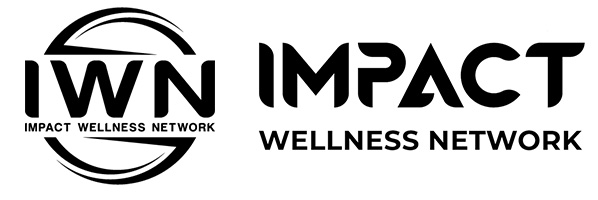Medication-assisted therapy (MAT) is creating waves in the field of addiction recovery. A game-changing approach, it seamlessly blends FDA-approved medications with counseling and behavioral therapies to support individuals on their road to recovery.
But what kinds of addictions benefit the most from MAT? And, more importantly, how does it contribute to lasting recovery? Below we will dive deep into these questions to help you better understand MAT’s role in transforming lives.
What is Medication-Assisted Therapy (MAT)?
Before we jump into specifics, let’s break down MAT. It’s not about replacing one dependency with another, as critics mistakenly believe. Instead, MAT is a clinically driven program designed to stabilize and support individuals as they tackle the physical and emotional elements of addiction.
The medications used work by either easing withdrawal symptoms, minimizing cravings, or blocking the effects of addictive substances. Combined with behavioral therapy and counseling, it’s a holistic approach proven to help people not just quit but stay in recovery.
Addictions That Benefit Most from MAT
While MAT may not be suitable for every type of addiction, it has shown incredible effectiveness in treating substance use disorders, particularly the following ones:
Opioid Addiction
One of MAT’s most recognized successes is its use in combating opioid addiction. Drugs such as heroin and prescription opioids (OxyContin, Vicodin, etc.) create intense physical dependencies that often derail detox efforts.
Medications Used:
- Methadone: Reduces withdrawal symptoms and cravings.
- Buprenorphine (Suboxone): Eases cravings while blocking opioid effects.
- Naltrexone: Prevents opioids from triggering a “high.”
These medications provide a stable foundation for patients to focus on their recovery while significantly lowering the risk of relapse and overdose.
Medication-assisted therapyAlcohol Use Disorder (AUD)
Quitting alcohol cold turkey can lead to severe withdrawal symptoms. MAT offers a safer alternative, stabilizing individuals while they learn to live alcohol-free.
Medications Used:
- Disulfiram (Antabuse): Creates unpleasant side effects when alcohol is consumed, discouraging drinking.
- Naltrexone (Vivitrol, Revia): Reduces cravings and blocks alcohol’s “rewarding” effects.
- Acamprosate (Campral): Helps the brain regain its chemical balance after quitting alcohol.
Combined with counseling, these treatments offer higher recovery success rates compared to standalone methods.
Nicotine Addiction
For those battling nicotine dependency, MAT simplifies the quitting process, which can often feel impossible due to its habit-forming nature.
Medications Used:
- Nicotine Replacement Therapies (NRTs): Patches, gum, sprays, and lozenges deliver small doses of nicotine to ease withdrawal symptoms without the harmful chemicals in cigarettes.
- Bupropion (Zyban) and Varenicline (Chantix): Prescription medications that reduce cravings and withdrawal effects, giving individuals a better shot at quitting.
Stimulant Addiction (Emerging Research)
While definitive MAT programs for stimulant addiction (like cocaine or methamphetamines) are still in development, promising research suggests certain medications (e.g., Modafinil and Bupropion) may assist by managing withdrawal symptoms and stabilizing behavior. Behavioral therapies remain critical in these cases.
How MAT Supports Long-Term Recovery
The power of MAT goes beyond addressing the physical effects of addiction. Here’s how it paves the way for lasting recovery:
Reduces the Risk of Relapse
Addiction recovery is often accompanied by overwhelming cravings or triggers. MAT provides tools to manage these cravings effectively, significantly lowering the likelihood of relapse.
Improves Patient Focus
By alleviating withdrawal symptoms and stabilizing the body, MAT allows patients to fully engage in counseling and behavioral therapy, where transformative work happens.
Supports Individualized Care
Addiction recovery is not one-size-fits-all. MAT tailors treatment to an individual’s specific substance use disorder, ensuring it meets their unique needs.
Stability
With the immediate stress of withdrawal and cravings reduced, individuals can rebuild their lives—repairing relationships, returning to work, and rediscovering their purpose.
Addressing the Stigma Around MAT
One thing we must highlight is the undue stigma surrounding MAT. Some critics argue it’s merely “substituting one drug for another.” This viewpoint fails to consider the evidence-driven outcomes MAT provides.
Studies consistently show that MAT leads to better recovery retention, lower relapse rates, and reduced overdose deaths. When combined with therapy, MAT becomes much more than medication—it becomes empowerment.
Is MAT Right for Everyone?
While MAT has proven benefits, it’s not a universal solution. It must be prescribed and monitored by a healthcare professional who can assess your medical history, addiction severity, and recovery goals. Counseling and therapy remain an integral part of MAT, ensuring that emotional well-being and coping strategies are not overlooked.
How Impact Wellness Network Can Help
At Impact Wellness Network, we believe that everyone deserves a chance at a healthier and happier life. Medication-assisted therapy (MAT) has revolutionized addiction treatment, offering a lifeline of hope and recovery.
By addressing both the physical and psychological aspects of addiction, MAT empowers individuals to break free from the grip of substance abuse and reclaim their lives. Our team of medical professionals and therapists work together to provide personalized care, ensuring the best chance at long-term recovery.
Contact us today to learn more about our MAT program and how it can support your journey towards a healthier, sober life.

